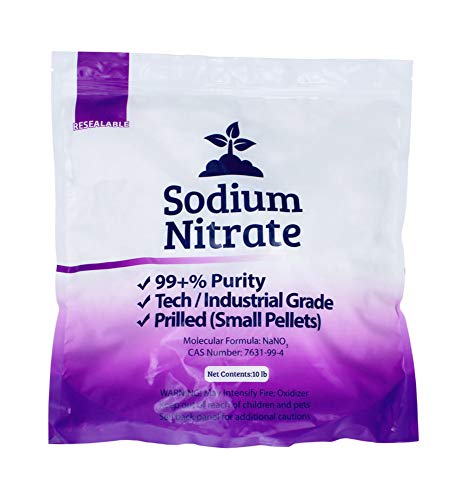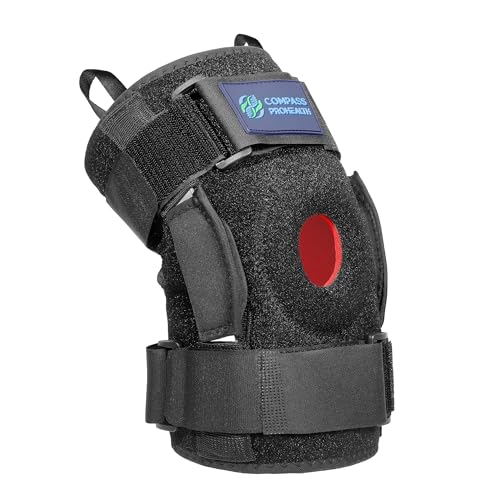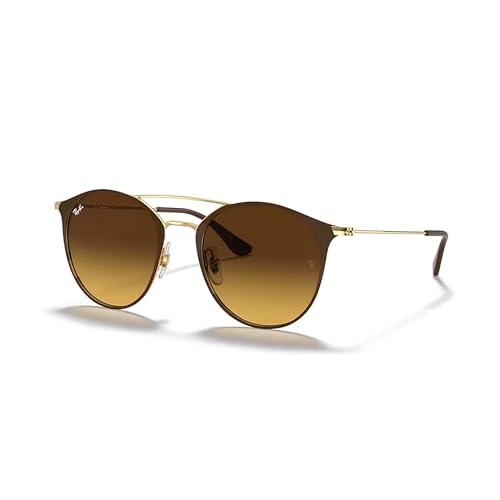Most small refiners will not melt material with Cadmium, or at least admit they did it. Without bag house type cleaning of the smoke and Cadmium will be generously shared with the neighborhood. Aside from eliminating Cadmium, the process will not remove copper from the precious metals so the benefit of removing small amounts of zinc and iron will be small. And since the slimes contain Cadmium as per the OP, it does not all pass off in the melting and some remains in the alloy to refine. That leaves the refiner dealing with it as a waste.
You are using an out of date browser. It may not display this or other websites correctly.
You should upgrade or use an alternative browser.
You should upgrade or use an alternative browser.
Waste treatment system at Gold Refinery
- Thread starter 4metals
- Start date

Help Support Gold Refining Forum:
This site may earn a commission from merchant affiliate
links, including eBay, Amazon, and others.
We can use sulfamic or sulphuric acid to drop lead from AR. At what point would cadmium come out of solution? As a filtering process or is something similar to lead and sulfamic/sulphuric helpful. I am thinking there isn’t much more than the melting since it seems to leave remnants in all areas including the refined metal, waste and bag houses.
Both lead and cadmium have a sulfate chemistry, lead is only slightly soluble as a sulfate so it comes out of solution. Cadmium is highly soluble so it stays in solution as a sulfate.We can use sulfamic or sulphuric acid to drop lead from AR. At what point would cadmium come out of solution?
I was processing cadmium containing material before, and yes, when you melt it down, Cd could be removed fairly quickly, even without sparging the melt with oxygen. Just simply hold it for hour or so in fairly oxidative furnance (flame) or partially opened electric furnance, and periodically dip graphite rod into the melt and shot with XRF. Eventually, all Cd and Zn will be gone. Cadmium even quicker than zinc, altough not always. Keep the surface of the melt nice and clean, this will speed up the process.
This could, as 4metals say, reasonably cut the toxic waste volume, because you are scrubbing only the "goodies"
I hope I needn´t to mention that melting cadmium material anywhere without a scrubber is very dangerous not only for you, but also for your neighbors.
This could, as 4metals say, reasonably cut the toxic waste volume, because you are scrubbing only the "goodies"
I hope I needn´t to mention that melting cadmium material anywhere without a scrubber is very dangerous not only for you, but also for your neighbors.
Gold.refinery
Well-known member
We are ready to recover gold and silver from silver chlorides. We kept them wet in gallons. We have two recommendations,
caustic and sugar - caustic and hydrazine.
Both will work, but which is better?
If we want to do caustic-sugar, I would like to explain my perceptions, please guide me.
We have about 2 cm of silver chloride on the bottom of a 12-inch gallon.
According to previous recommendations, we should dissolve 500 grams of caustic in one liter of water. Then add slowly to the gallons of chlorides (exothermic reaction).
Then use the reaction heat to add about 400 grams of sugar syrup. Fiz until it is not visible. Stirring is also very important in these steps.
Am I right so far?
We now have a thick, viscous black solution where silver and gold have settled.
Can I use the vacuum filter that I used for gold to wash silver from caustic?
Can I add HCl to dilute and wash better?
If so, how much am I allowed to add?
caustic and sugar - caustic and hydrazine.
Both will work, but which is better?
If we want to do caustic-sugar, I would like to explain my perceptions, please guide me.
We have about 2 cm of silver chloride on the bottom of a 12-inch gallon.
According to previous recommendations, we should dissolve 500 grams of caustic in one liter of water. Then add slowly to the gallons of chlorides (exothermic reaction).
Then use the reaction heat to add about 400 grams of sugar syrup. Fiz until it is not visible. Stirring is also very important in these steps.
Am I right so far?
We now have a thick, viscous black solution where silver and gold have settled.
Can I use the vacuum filter that I used for gold to wash silver from caustic?
Can I add HCl to dilute and wash better?
If so, how much am I allowed to add?
For reasons we discussed earlier, I have avoided using hydrazine whenever possible. So I would choose the caustic sugar method.
Before you drain off the liquid try to use a scoop to scoop up some of the solid you have reduced. Look at the color closely. Any bits of white indicate poor stirring and incomplete conversion of Silver Chloride to Silver Oxide. Silver Oxide is black and the Silver metal you wish to have when this process is complete is silver-gray in color.
Before you filter it, make sure you have had a complete conversion.
If you put this small quantity of Silver nitrate from dissolving the first reduction through your big filters you will lose values. Use a filter system appropriate for ths size you are working with.
Before you drain off the liquid try to use a scoop to scoop up some of the solid you have reduced. Look at the color closely. Any bits of white indicate poor stirring and incomplete conversion of Silver Chloride to Silver Oxide. Silver Oxide is black and the Silver metal you wish to have when this process is complete is silver-gray in color.
Before you filter it, make sure you have had a complete conversion.
Use a filter that you do not use for refined gold. That filter should be a single use filter to avoid contamination. Since you will be re-dissolving the Silver metal to get the Gold, you do not have to be concerned with a little cross contamination. When you process the silver a second time after recovering the gold, you want a clean filter.Can I use the vacuum filter that I used for gold to wash silver from caustic?
This is a small quantity, your filters are made for much bigger lots. consider a buchner funnel with a vacuum suction, or for this small quantity a speed funnel with folded paper and gravity draining. Gravity draining will not be the best for rinsing but that is not critical for the first run where the Silver contains Gold.We have about 2 cm of silver chloride on the bottom of a 12-inch gallon.
If you put this small quantity of Silver nitrate from dissolving the first reduction through your big filters you will lose values. Use a filter system appropriate for ths size you are working with.

$223.49 ($0.06 / Ounce)
50 lb Sodium Nitrate Fertilizer 99+% Pure Chile Saltpeter Gold Metal Refining Industrial Grade Glass Pottery Enamels
Duda Energy

$6.38 ($0.13 / Count)
Pico Fuse 125V 1A Fast Blow Fuse Resistance Type No self-Recovery Fuse for Telecom Communication 50Pcs,Aicosineg
Aicosineg US

$17.80
$26.95
ENGINEER PZ-58 Screw Removal Pliers Extractor Pliers (Combination Pliers), with unique non-slip jaws for quickly removal of damaged or rusted fasteners
Bridge Precision Tools

$36.68
$69.00
Petroleum Refining in Nontechnical Language Third Edition (Pennwell Nontechnical Series)
Hafa Adai Books LLC

$159.99
5000ml Beaker, Low Form Griffin, Borosilicate 3.3 Glass, Double Scale, Graduated, Karter Scientific 247R8 (Case of 4)
Lake Charles Manufacturing

$86.58
$171.00
Catalysis in the Refining of Fischer-Tropsch Syncrude (Catalysis Series, Volume 4)
Basi6 International

$7.49 ($0.15 / Count)
$7.99 ($0.16 / Count)
Beauticom 3g/3ml (0.1 Fl Oz) Round Clear Plastic Jars with Round Top Lids for Creams, Lotions, Powders, Glitters, and more... (Color: Clear Lid, Quantity: 50 Pieces)
Beauticom

$83.88
$115.00
Petroleum Refining: Technology, Economics, and Markets, Sixth Edition
Woodville Books

$25.99 ($3.71 / Count)
WORKPRO 7-Piece Jewelers Pliers Set, Jewelry Making Tools Kit with Easy Carrying Pouch (Blue)
GreatStar Tools

$12.99
BROADMAN CHURCH SUPPLIES Anointing Oil Holder with Key Ring and Eyedropper - Brass
Lifeway Christian Resources
I'm sure you have kept up with the numbers. If you give us how much silver your numbers say is there we can give you estimates on the amount of water and chemicals you need. You use to much an amount of water and your not going to produce a lot of heat which aids in the process.
Gold.refinery
Well-known member
The percentage of silver in our input was 6%. We refined 14,000 grams of gold feed. We should probably get about 800 grams of silver and hopefully the trapped gold will also be recovered.If you give us how much silver your numbers say is there we can give you estimates on the amount of water and chemicals you need
It takes about 20g of NaOH, 133ml of tap water, and 13.3ml of light Karo per troy oz of silver (41.3g of AgCl). I like to use about 10% extra of each. 1ml of syrup = 3 grams sugar.
800 grams of Metallic silver expected..... 800/31.1 = 25.7 oz
NaOH = 25.7 oz X 20 = 514 + 10% = 566 grams
133ml water X 25.7 oz = 3,418 + 10% = 3,760ml
Sugar 25.7 oz X 13.3ml (syrup) = 342 + 10% = 375 ml syrup ( 1,127 grams sugar )
800 grams of Metallic silver expected..... 800/31.1 = 25.7 oz
NaOH = 25.7 oz X 20 = 514 + 10% = 566 grams
133ml water X 25.7 oz = 3,418 + 10% = 3,760ml
Sugar 25.7 oz X 13.3ml (syrup) = 342 + 10% = 375 ml syrup ( 1,127 grams sugar )
Last edited:
How many grams of gold are you missing in total? And does that include the larger chunks of chloride encrusted gold you were able to remove from the finer particles of Silver Chloride?
You should be able to do this in a 5 gallon plastic bucket in a fume hood. Use a drill and a stainless paddle mixer. Mixing and chopping is essiential to break it up and insure a complete reaction. Since you're going to do a double refine on the silver this will be a good learning lesson. The chlorides you don't convert will be left over with the gold when you redissolve it into nitric the second time.
Just for clarity here. The solution will be black when you add the NaOH because the silver will be an oxide BEFORE you add sugar to convert it. Then the silver will turn grey and the solution will be a brown syrupy color like Coca-Cola. Don't pour the silver and waste solution into the vacuum filter at once. Once the silver packs down in the funnel it will be harder to wash. Pour the excess solution into the filter leaving the silver in the container. Then add water (Hot) and wash it again. Pour that through the filter still leaving the silver in the vessel. After a couple of washes you can then pour the silver into the funnel to complete the rinsing.Am I right so far?
We now have a thick, viscous black solution where silver and gold have settled.
Gold.refinery
Well-known member
Thank you sincerely, very helpful. Like a lamp in the dark.It takes about 20g of NaOH, 133ml of tap water, and 13.3ml of light Karo per troy oz of silver (41.3g of AgCl). I like to use about 10% extra of each. 1ml of syrup = 3 grams sugar.
800 grams of Metallic silver expected..... 800/31.1 = 25.7 oz
NaOH = 25.7 oz X 20 = 514 + 10% = 566 grams
133ml water X 25.7 oz = 3,418 + 10% = 3,760ml
Sugar 25.7 oz X 13.3ml (syrup) = 342 + 10% = 375 ml syrup ( 1,127 grams sugar )
WEAR EYE PROTECTION! Caustic acid will PERMANENTLY damage your eyes. Fear caustic more than acids! This process will have small aerosol particles that will get in your eyes if not careful.Thank you sincerely, very helpful. Like a lamp in the dark.
Gold.refinery
Well-known member
When washing silver chloride in each operation, we separated the undissolved fine particles.How many grams of gold are you missing in total? And does that include the larger chunks of chloride encrusted gold you were able to remove from the finer particles of Silver Chloride?
We did not get 50.6 grams of gold in total 13,595 grams of refining operations.
This deficit includes :
chemical operations,
analysis Mistakes,
initial and final melting operations.
Gold.refinery
Well-known member
We have an old italimpanti filter.Just for clarity here. The solution will be black when you add the NaOH because the silver will be an oxide BEFORE you add sugar to convert it. Then the silver will turn grey and the solution will be a brown syrupy color like Coca-Cola. Don't pour the silver and waste solution into the vacuum filter at once. Once the silver packs down in the funnel it will be harder to wash. Pour the excess solution into the filter leaving the silver in the container. Then add water (Hot) and wash it again. Pour that through the filter still leaving the silver in the vessel. After a couple of washes you can then pour the silver into the funnel to complete the rinsing.
In the previous operation we used to filter the gold sponge. It worked well.
After rinsing the Coca-Cola solution twice with hot water, can we use this filter to finally wash the silver with 2 filter paper?
Attachments
Quick question i never heard answered. Do you have a fume hood and glassware such as a 2,000ml beaker? I personally, and this is just me, would take the crusted pieces of gold and add some NaOH to the pieces. This will convert the crust to metallic silver. Then wash a couple of times. Then when you do ar don't add any hcl at first. Add the Nitric. This will dissolve and penetrate the gold deeper. If you add hcl and nitric you will create another crust barrier. Once you add the Nitric let it work on a warm hotplate for a few minutes. Then you can add your hcl which will turn any silver into silver chlorides. Filter your gold from the chlorides and drop it. You can then put the chlorides right back into the process again with the next batch. You are going to need a smaller Buchner funnel to filter the gold solution with. This will also give you visual references to go by that shows you what is happening on larger scales.
Gold.refinery
Well-known member
Dimension us 35 cm.I can't tell the dimensions on that
13 inches. A little bigger than a 5 gallon bucket. Yeah that should work if it's all you have, though it would be harder to clean out verses a smaller Buchner you can physically dump. You will still need a smaller Buchner for the solutions though.
Last edited:
































































